Previous Page.........................Return to Index..............................Next Page
Weight and Stability (Center of Gravity / Center of Pressure):
On the previous page we have seen the benefits of weight for traction, now let's look at the effect it can have on stability. If you have ever driven in snow you know if you spin the tires throw heavy stuff at the back of the trunk or pickup bed to gain traction. Your first inclination on the salt might be to do the same thing and you might of wondered why we put the weight boxes "ahead" of the rear axle where some of the weight was going to the front of the car.
If you have been around the LSR scene much at all you have heard talk of getting the "center of gravity" ahead of the "center of pressure" if you want a car that will go straight down the track. Center of gravity is pretty easy. Put a jack under each side of the car near the middle and jack it up. Chances are it will probably not balance, but teeter to the front or back. Move the jacks forward or backwards until the car balances. Now the center of gravity is at some point above the two jacks. For our purposes we just need to know this point for right now.
The center of pressure is a little harder to visualize. Looking at it from the side it is a point on the vehicle that if there was pressure from the side (air pressure) and you pinned the vehicle on that point the pressure in front of the point and behind the point would be equal and the vehicle would not spin about the point (the center of pressure). Let's look at a couple examples:
.......................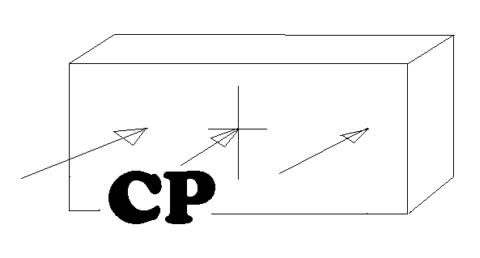
The first example is a rectangular shape viewed from the side. Here the CP (center of pressure) would be in the middle (center arrow) as the pressure on the side of this shape would be the same in front of and behind that point.
.......................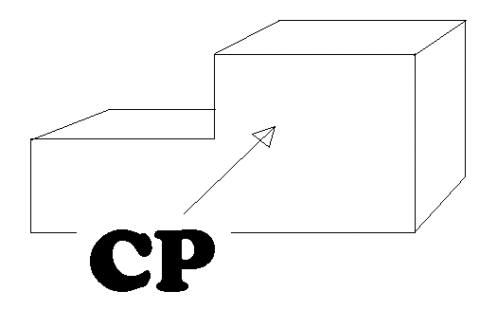
Now we might have something that looks a little more like a car/pickup with the hood at the front and cab at the back. Both parts are the same length, but the rear part has a larger area than the front. To get equal areas and equal pressure in front of and behind the CP you have to move it back on the vehicle. The raised part at the back could also represent a tail on a lakester or streamliner or the side spill plates on a spoiler.
......................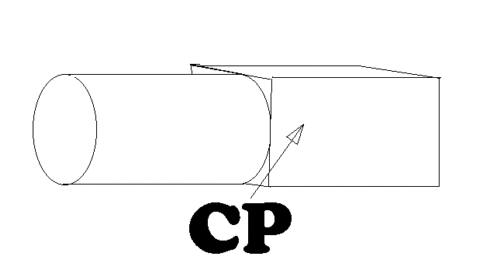
Now let's look at a third situation. Here the length of the cylinder shaped front is the same length as the box
shape at the back. They also would have the same area if you viewed them directly from the side. The CP would not
be at the union line between them since the round shape on the front would be less effected by an air pressure
from the side as it is more "aero" than the flat sided box at the back. Since the back has a pressure
advantage over the front the CP would move towards the rear into the box area.
.............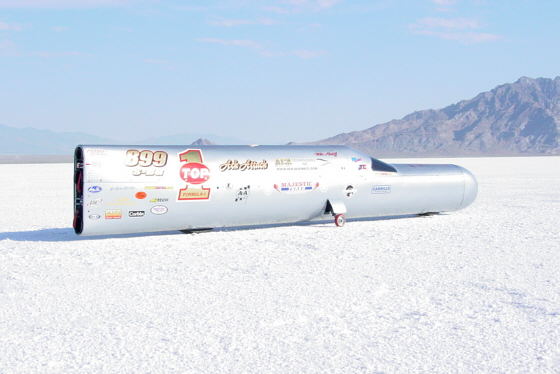
From this we can see that if we had a streamliner/lakester that was the same height front to rear, but the front was more rounded and the rear tapered into a flat sided tail that would help to move the CP rearward.
.....................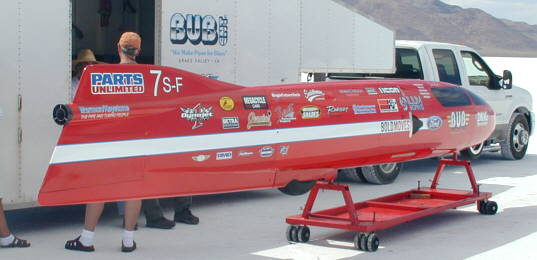
Add a flat sided tail above the rear of the body and the CP would move even further rearward.
So let's get back to the idea of getting the center of gravity ahead of the center of pressure, the same principal that makes an arrow go straight with the arrow head (weight forward) and the feathers in the back that gets the center of pressure to the back. Airplanes use the same principal.
With a lakester or streamliner you can have a big input where the center of pressure and center of gravity or located with classes that require a car/truck body your options diminish. If you are running a Competion Coupe, Modified Roadster (front or rear engined), or Modified Sports you have the option of a long nose. If the nose tapers down it will have the effect of moving the CP rearwards as shown in the second example above.
......................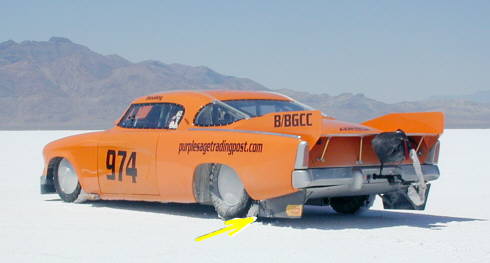
If the rules in your class allow a rear spoiler then I would put one on. I would recommend keeping the spoiler as flat as possible to reduce aero drag. Don't use it for downforce unless absolutly necessary as that will most likely induce more areo drag (use weight). The real benifit to the spoiler is it lets you attach the vertical spill plates to the sides of it. Position the spoiler in such a way that allows you to make the side spill plates as large as the rules allow both in length and height. They will help to move the center of pressure backwards and help with the stability.
If the rules permit add a rear skirt (see arrow) and make it as large as possible. It will also help move the center of pressure rearwards.
If you can't do much to move the center of pressure rearwards then do what you can to move the center of gravity forwards. You are not trying to move the center of gravity to the front of the car just try and keep it ahead of the center of pressure. With the Stude above we have about 51% of the weight on the front wheels/tires and have made the spill plates as large as possible and also the rear skirt as large as possible within the rules.
..................................................................Next Page